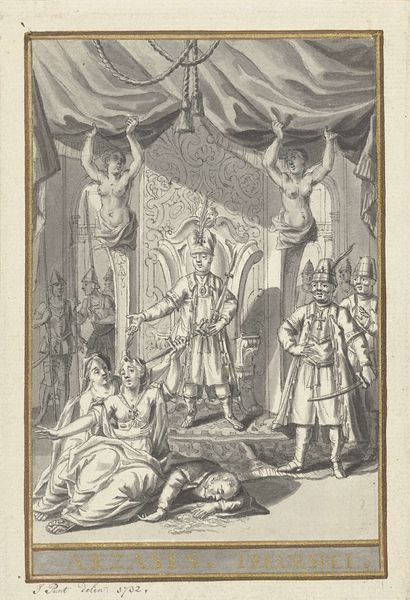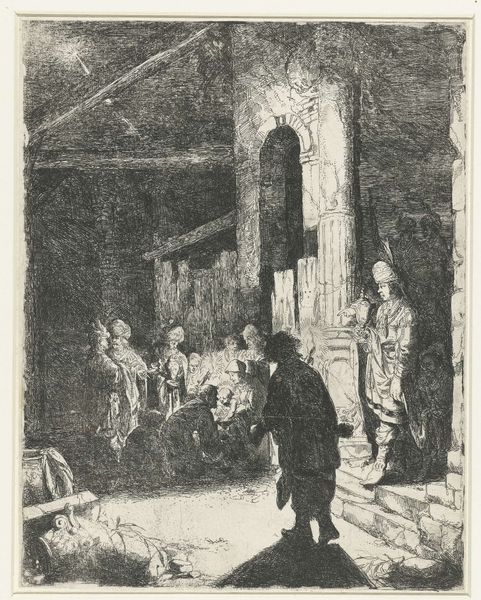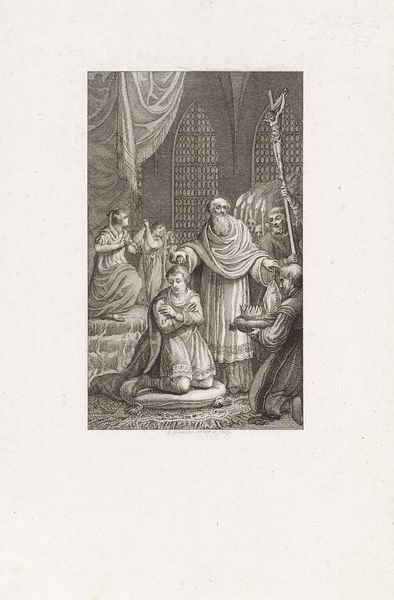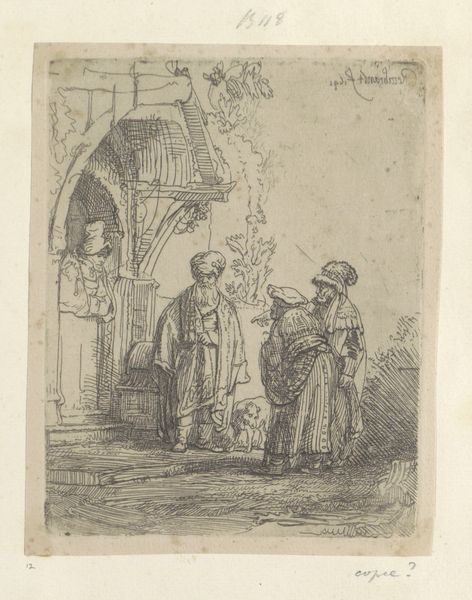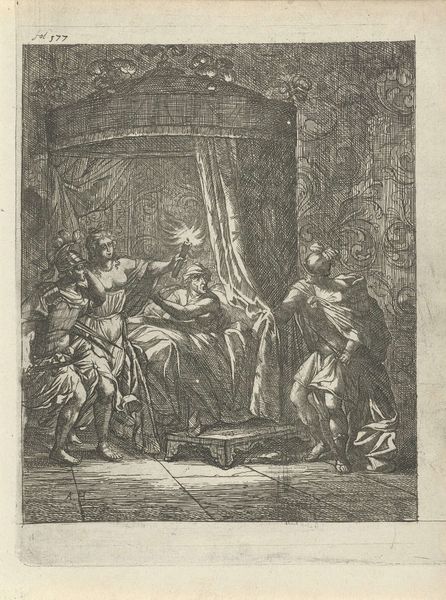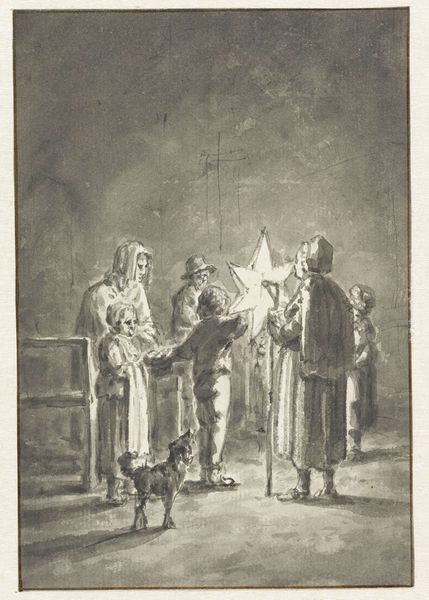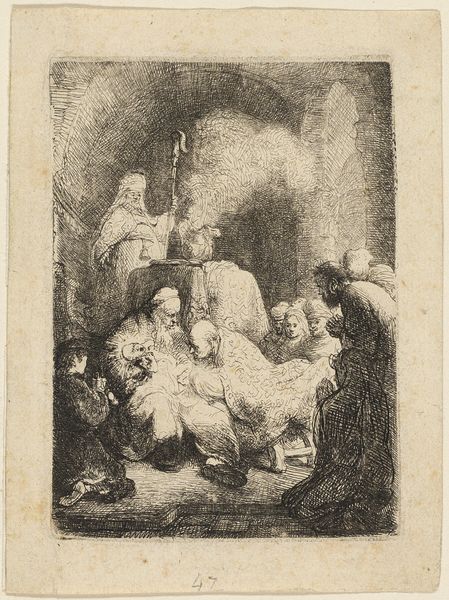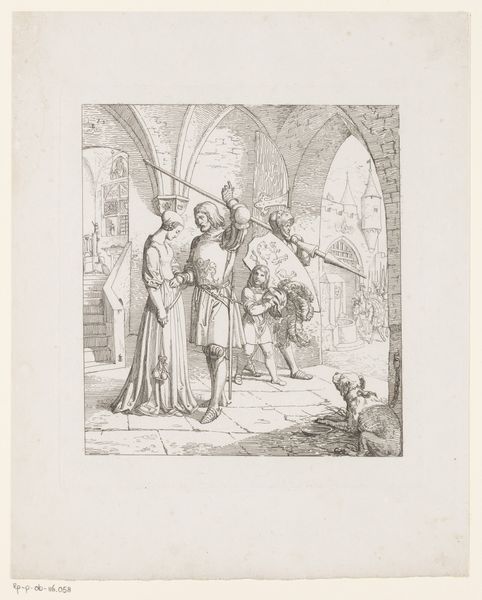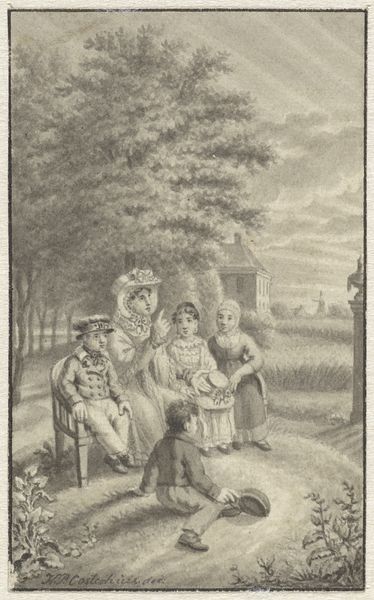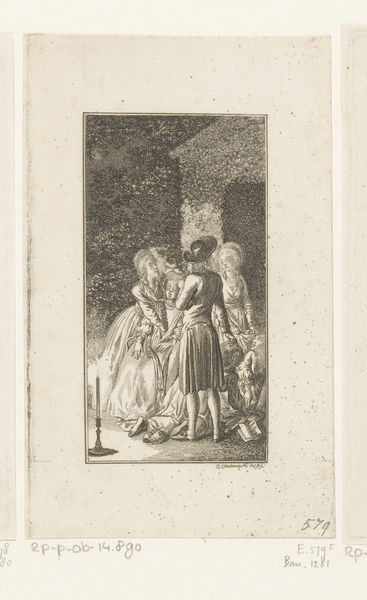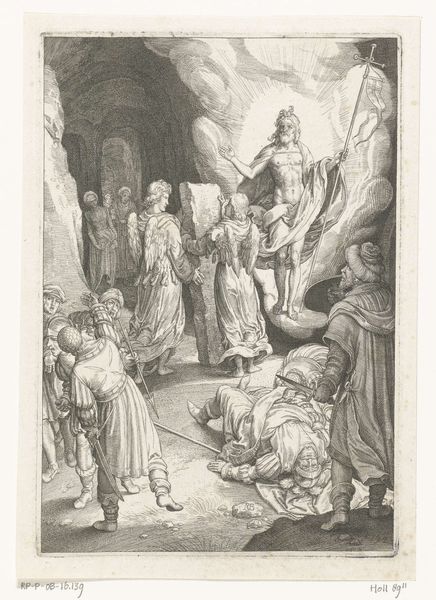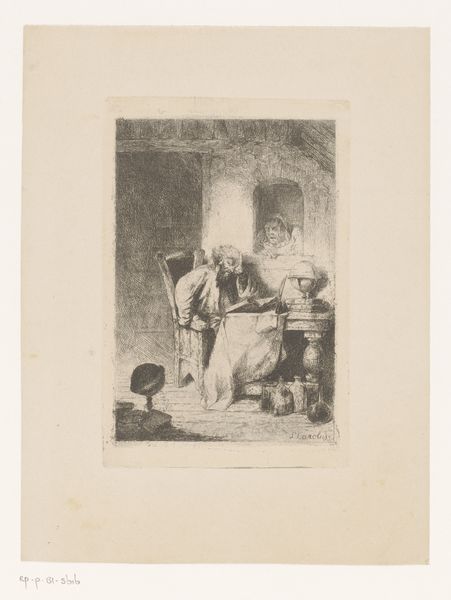
print, etching
#
narrative-art
#
baroque
# print
#
etching
#
old engraving style
#
figuration
#
personal sketchbook
Dimensions: height 128 mm, width 45 mm
Copyright: Rijks Museum: Open Domain
Editor: This etching, "De boodschapper" or "The Messenger," made sometime between 1639 and 1706 by Pieter Rottermondt, presents a rather theatrical scene. There’s this clear power dynamic depicted – what jumps out at you when you look at it? Curator: I see a staged presentation of power, definitely. Etchings like these were not merely aesthetic objects; they served a crucial function in circulating and shaping socio-political ideologies. Note the carefully rendered details of clothing and architecture – they speak volumes about status and societal structures. The composition, the placement of the figures… It's all carefully considered to create a visual hierarchy, isn’t it? Who do you think this etching was meant to impress? Editor: Perhaps other members of the upper class? To reinforce that hierarchy, maybe? The details in the clothing especially seem to denote class. Curator: Exactly. Prints had a public role; this could have circulated widely. How does it contribute to consolidating the social hierarchy, particularly considering that visual propaganda was becoming increasingly prominent in Europe at this time? What effect do you think its imagery had? Editor: I suppose that the wide distribution would certainly emphasize and normalize these established social positions... The dramatic lighting and composition makes the scene feel official, as if sanctioned by an external force. Curator: Precisely. The artist isn’t just representing a scene; he’s actively participating in a discourse around power and authority. The museum’s display of this work today reinforces the history of societal structures. How should modern institutions deal with art of propaganda today? Editor: It’s something to think about. I’d never really considered the political function of art like this. I mean, I understood it intellectually, but I hadn’t seen it so explicitly. Curator: I agree that it's important to look past our 21st century expectations. That understanding allows for a much more complete understanding of the past and the social functions that art may be tasked with carrying out.
Comments
No comments
Be the first to comment and join the conversation on the ultimate creative platform.

